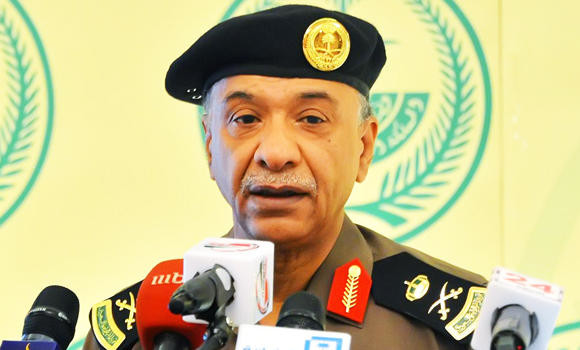JEDDAH: The Interior Ministry has confirmed the hand of Islamic State in Qatif suicide bombing.
Maj. Gen. Mansour Al-Turki, Interior Ministry spokesman, said latest investigations have revealed that IS was behind the bombing of Ali bin Abi Taleb Mosque.
Last month, a cell was busted, and security forces revealed that one of the arrested members, Essam Al-Daoud, had provided shelter to Al-Qadeeh suicide bomber Saleh Al-Qashami.
Al-Turki said that Al-Daoud has been brought back to the Kingdom from Lebanon in 2009 and was sentenced to two years in prison in the Kingdom. He was released after serving his prison term.
Brig. Gen. Bassam Attia said that the IS strategy is based on splitting the Kingdom into sectors based on geographical, sectarian and economic divides. He added that IS foresees implementing three clear objectives — targeting security men, inciting sectarian strife and targeting foreigners. These three goals serve the organization’s general aim of spreading chaos.
He said that the orders for the recent attack on a security patrol in Riyadh went through several people. The attack led to the killing of Majid Ayed Al-Ghamdi, a soldier.
Attia explained that the preparation for the operation started 10 months before the attack as Abdul Malik Al-Baaidi started communicating with his brother Abdul Aziz Al-Baaidi, who had gone to Syria to join IS, asking to join him. The brother’s response was for Abdul Malik to stay and wait for orders to fight inside Saudi Arabia. The brother in Syria connected Abdul Malik to a dreaded terrorist who is wanted by the security forces.
The communication continued for four months and then Abdul Malik was ordered to target security personnel.
Upon receiving the orders, he proceeded to form a cell of 23 people whose names were sent to the organization’s leaders in Syria. The cell was provided with arms and cell members were trained in using weapons.
In a cell meeting, the now-arrested terrorist, Mohammad Al-Tuwairesh, located a patrol on a mission in Riyadh while he was at a family picnic. He noticed that the patrol remained in a specific location.
When Abdul Malik agreed on the target, the roles were defined. Abdul Malik and Mohammed Al-Assimi took on the shooting roles; Mohammad Al-Tuwairesh would handle the driving; Mohammed Al-Khamis was responsible for scanning the location before the cell arrived at the site, while Abdullah Al-Shanbeer was handed the task of filming the operation.
Attia said that the cell members decided to attack on Friday afternoon, May 9.
When they arrived at the site and received a signal, Abdul Malik and Al-Assimi fired 10 shots at the patrol vehicle while Al-Tuwairesh poured gas on the patrol and set it on fire while soldier Majid Al-Ghamdi was in the car.
Al-Turki said that the information proved that this terrorist group is closely linked to IS and said security forces are looking to find whether this cell is connected with Iran.
“We cannot accuse anybody now without verification, but we want to make it clear that the explosives used in Al-Qadeeh are the same type as seized on King Fahd Causeway that were coming from Bahrain,” he said.
IS design to divide Kingdom exposed
IS design to divide Kingdom exposed











